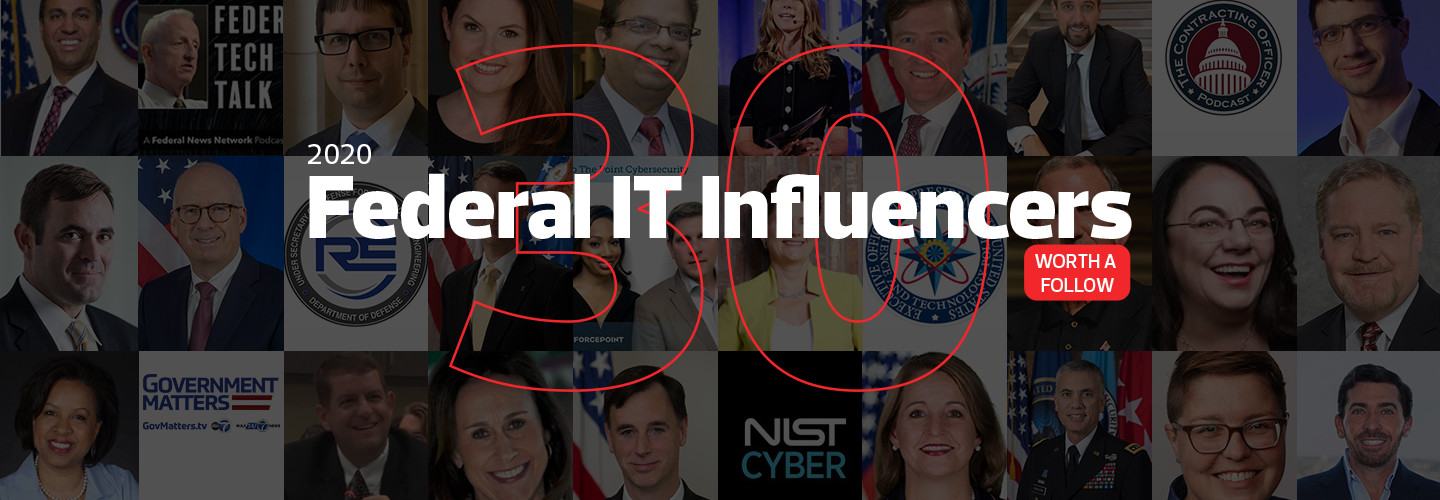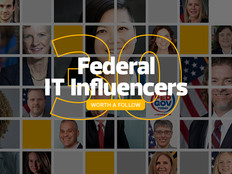30 Federal IT Influencers Worth a Follow in 2020
The federal IT landscape, like most aspects of life, has been transformed by the coronavirus pandemic. Indeed, a broad spectrum of government agencies embraced telework tools and technologies as never before to keep the business of government running this past spring.
2020 was always going to be a pivot, with the November election looming and either a new administration taking office in January 2021 or a second term for the Trump administration likely bringing changes in federal IT personnel and policy. Some of those changes are already underway, with Federal CIO Suzette Kent stepping down from her role in July.
The pandemic has also upended what it means to be an influencer in federal IT. With so many in-person events going virtual, it is no longer the person taking a keynote stage at a conference who commands the most attention. Having a robust online presence is more of an asset now than ever for officials and organizations looking to get their message out to the government IT community.
With that in mind, we have crafted a fresh “influencer list” of bloggers, Twitter personalities, podcasts, LinkedIn pros and those who use their social channels to influence the conversation. They have a lot to say on the topics of the day — from remote work to cybersecurity, digital transformation, election security and more. With so many people working from home, these thought leaders have a ready audience that is hungry for what they are offering, which is right at users’ fingertips.
We hope these 30 federal IT influencers, listed in alphabetical order by first name, will be your guiding stars for insights and opinions on the latest in government technology — and if you’re on the list, spread the news and grab our IT influencer cover image for your social media pages or websites.
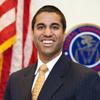
The chairman of the Federal Communications Commission since 2017 (and an FCC commissioner since 2012), Pai is one of the leading voices on moving the United States forward on the deployment of 5G wireless networks, which are becoming increasingly important to both civilian and defense agencies. Pai uses his widely viewed Twitter feed to not only discuss public policy but also post humorous thoughts and items related to bits of American history.

If you want to stay in the know about government technology policy and news, it’s wise to follow Alexandra S. Levine, a reporter at Politico whose beat sits at the intersection of government, technology and policy. Levine writes Politico’s popular daily newsletter, Morning Tech, a must-read daily digest of need-to-know government tech news and trends.

For several years now, the federal government has been focused on honing its user experience design, so that government services look and feel more like the commercial ones citizens are used to interacting with in their personal lives. A key player in those efforts has been Anne Petersen, who serves as the director of experience design at 18F, the General Services Administration’s digital services unit. Petersen’s Twitter feed is a font of useful tips on creating better designs and user experiences.

Since 2018, Ashley Mahan has been leading the GSA’s Federal Risk and Authorization Management Program, better known as FedRAMP, which approves and monitors cloud services to ensure they meet government security standards. The program has become more relevant than ever as agencies have been busy procuring cloud services over the past several months to help meet the demands of remote work. Indeed, Mahan recently told FedTech that “since March, the program has seen double the number of agency reusability requests for cloud products approved by FedRAMP and a 50 percent increase in meetings with agencies to discuss FedRAMP-related topics.” Look to Mahan to stay on top of rapidly evolving government cloud policy.

Bakul Patel serves as director of the division of digital health at the Food and Drug Administration, which covers everything from artificial intelligence and cybersecurity to health IT and telemedicine. At a time when more Americans are using telehealth solutions to interact with care providers, digital health has become more relevant than ever. Patel uses his Twitter feed to promote digital health initiatives of all kinds, including how it is being used to aid the response to the coronavirus.

A veteran of the U.S. Digital Service and Office of Management and Budget, Bill Hunt’s work focuses on how to make it easier for citizens to use digital services get the information they need from government. As the chief enterprise architect of the Small Business Administration, Hunt manages the technology roadmap for the agency. His Twitter feed is a down-to-earth mix of observations on government data and nerd humor.
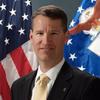
Former Air Force Deputy CIO Bill Marion, the most senior civilian IT and cybersecurity official in the service branch, resigned from his role to shift to the private sector after a 28-year career in the service. Marion led key initiatives in the Air Force, including the shift to outsourcing basic IT functions to commercial partners and the cloud. Marion recently joined Accenture as managing director of growth and strategy in the company’s defense and intelligence practice, but is still a leading voice on government innovation.
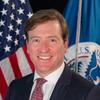
Krebs, the director of the Department of Homeland Security’s Cybersecurity and Infrastructure Security Agency, remains one of the most prominent cybersecurity officials in government. His profile has grown this year as CISA has focused on both securing federal workers (and citizens in general) who are working from home and increasing involvement in election security efforts. Krebs’s Twitter feed is a go-to source for the latest on cybersecurity vulnerabilities and government efforts to combat them.

The National Institute of Standards and Technology’s cybersecurity programs “seek to enable greater development and application of practical, innovative security technologies and methodologies that enhance the country’s ability to address current and future computer and information security challenges.” The agency’s cyber-specific Twitter feed highlights industry cybersecurity events and promotes best practices for managing cybersecurity risk.

The Defense Department CTO’s office, officially known as the Office of the Undersecretary of Defense for Research and Engineering, focuses on driving innovation at the Pentagon. The DOD CTO’s Twitter feed highlights this work and how the department is using emerging technologies to meet its mission.

Sale serves as the assistant commissioner of solutions for the GSA’s Technology Transformation Services. He is a digital transformation leader in government and uses his Twitter feed to evangelize for the power of technology to improve digital service delivery and citizens’ trust in government.

Federal News Network’s “Federal Tech Talk” podcast covers the nexus of government and high tech. Hosted by John Gilroy of The Oakmont Group, the weekly podcast’s guests include a wide range of figures from the private sector who work in federal IT, as well as government IT leaders such as U.S Patent and Trademark Office CIO Jamie Holcombe. The podcast covers a host of topics, including mitigating IT risks during the pandemic, understanding the role of AI in federal IT, and the challenges of supporting a remote workforce.

This weekly podcast, hosted by former federal contracting officers Kevin Jans and Paul Schauer, dives deep into the world of federal contracting. While that may seem like a snooze for some, the podcast offers a wealth of information on the ins and outs of government procurement, which is a critical piece of digital transformation. After all, it’s one thing to come up with an innovative technology solution. It’s another thing entirely to get an agency to purchase it and start using it.

As much a television mainstay for government policy and IT nerds as Meet the Press is for politicos, Government Matters regularly hosts top federal IT leaders for discussion on the latest news and trends in the community. Stay tuned to hear what these leaders have to say on the latest in government technology.

Taylor serves as assistant director for quantum information science at the White House Office of Science and Technology Policy. Over the past few years, the federal government has put more resources behind the nascent technology of quantum computing, hoping to leverage its superior analytical power. Taylor serves as one of the government’s key quantum experts, so to stay on top of where the technology is going next in federal IT, follow his activity online.

Roat, who stood out for her leadership on cloud migration as the CIO of the Small Business Administration for more than three years, was officially named deputy federal CIO in May. With the resignation in July of Federal CIO Suzette Kent, Roat is, for the time being, the top IT official in the federal government. Whenever she speaks at industry events, she does so with both authority and humility, and the federal IT community takes notice.

A career fed, Davie left the GSA earlier this year after 30 years to join NASA as deputy associate administrator for the space agency’s Mission Support Transformation Office. Davie still actively promotes the work of the Technology Transformation Services office at GSA as well as the innovation NASA drives forward on a daily basis.

In 2018, Masterson joined DHS’ Cybersecurity and Infrastructure Security Agency as a senior cybersecurity adviser on election security. That role has grown in prominence in 2020 as election cybersecurity efforts have ramped up, both within CISA and in state and local governments. Masterson’s Twitter feed is a must-watch for updates and best practices on election security as November nears.
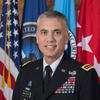
Gen. Nakasone has served as both the director of the National Security Agency and head of U.S. Cyber Command since 2018. Although he has been on Twitter only since June and has tweeted just a handful of times, more than 58,000 followers have signed on to see what he has to say about national security and cybersecurity threats. Curiously, this spring, scammers tried to catfish women by posing as Nakasone, so it makes sense that he might want an official online presence.

Hosky is the cofounder of Hosky Communications, which owns and operates FedInsider, a major forum for federal IT events. She remains a knowledgeable and well-connected source of information in the world of government IT.
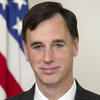
Joyce, senior adviser for cybersecurity strategy to the director of the NSA, remains one of the most well-respected voices in federal cybersecurity. His Twitter feed offers humorous and insightful takes on cyberthreats in the news and on threats the NSA has uncovered (and can talk about publicly).

Ross, a fellow at the National Institute of Standards and Technology, is one of the agency’s pre-eminent cybersecurity experts and is one of the architects of the agency’s widely used Cybersecurity Framework. On Twitter, he promotes new NIST cyber-related publications as well as the adoption of security approaches such as DevSecOps.

McCarthy remains one of the most insightful government IT industry analysts out there. As the research director for IDC Government Insights, he actively posts his thoughts on LinkedIn and is a human reservoir of data about government IT trends.
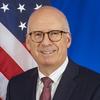
McGuigan, who has served as the State Department’s CIO since March 2019, is one of the few government CIOs with a large and active presence on Twitter. He uses it to promote the innovation the State Department is undertaking, including how it has used the cloud to maintain business continuity and support remote work, and how the agency is evaluating 5G technology.
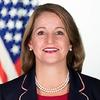
Kent stepped down from her role as Federal CIO in July after more than two years on the job, and left with universal respect for her tenacity and willingness to throw herself into the work of modernizing the government. She spearheaded updates on key government IT policies on data center optimization, cloud, the Trusted Internet Connections program and more. Kent also focused on setting out strategies that future administrations can use to drive innovation. She says she was frustrated by the way Congress funded innovation projects one year at a time instead of thinking long term. Although she is likely to return to the private sector, Kent is sure to remain a trusted and influential voice in government IT.

The name of Forcepoint’s cybersecurity podcast says it all. The security vendor’s podcast aims to be a weekly digest of what’s going on globally and gets to the point by keeping its length to about 20 minutes or less. Recent episodes have focused on how working from home has changed cybersecurity, how DHS uses AI in cybersecurity, and how cross-domain solutions help war fighters. The podcast continues to attract big names in government, the private sector and media when it comes to cybersecurity.

Suder is founder and president of the Advanced Technology Academic Research Center, a nonprofit designed to foster collaboration and professional development in government technology. He regularly curates updates on emerging technologies and posts them to his Twitter feed, and remains a key insider to follow.

As president of U.S. regulated industries at Microsoft, Townes-Whitley is the software and cloud giant’s key player in government affairs. Recently, she has highlighted how Microsoft’s collaboration tools, such as Teams, have enabled federal agencies to support remote work.
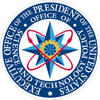
OSTP leads interagency science and technology policy coordination efforts and provides scientific and technical analysis and judgment to the president on key policy issues. For an official take on the White House’s scientific and technological priorities, look no further.

Eggers serves as the executive director of Deloitte’s Center for Government Insights, where he is responsible for the firm’s public sector thought leadership. He regularly posts on Twitter — most recently, about how the pandemic is forcing government to transform and respond — and is a key thought leader on digital transformation in government.


